Acute Aortic Regurgitation
- Causes include
- valve abnormalities, e.g. Endocarditis
- aorta abnormalities, e.g. Aortic Dissection
- iatrogenic complications, e.g. blunt chest trauma or transcatheter procedure
- Acute AR: acute volume overload → severe pulmonary congestion and low cardiac output
Chronic Aortic Regurgitation
- Stages A-D
- A: at-risk
- B: progressive AR
- C: severe, but asymptomatic
- D: severe, symptomatic AR
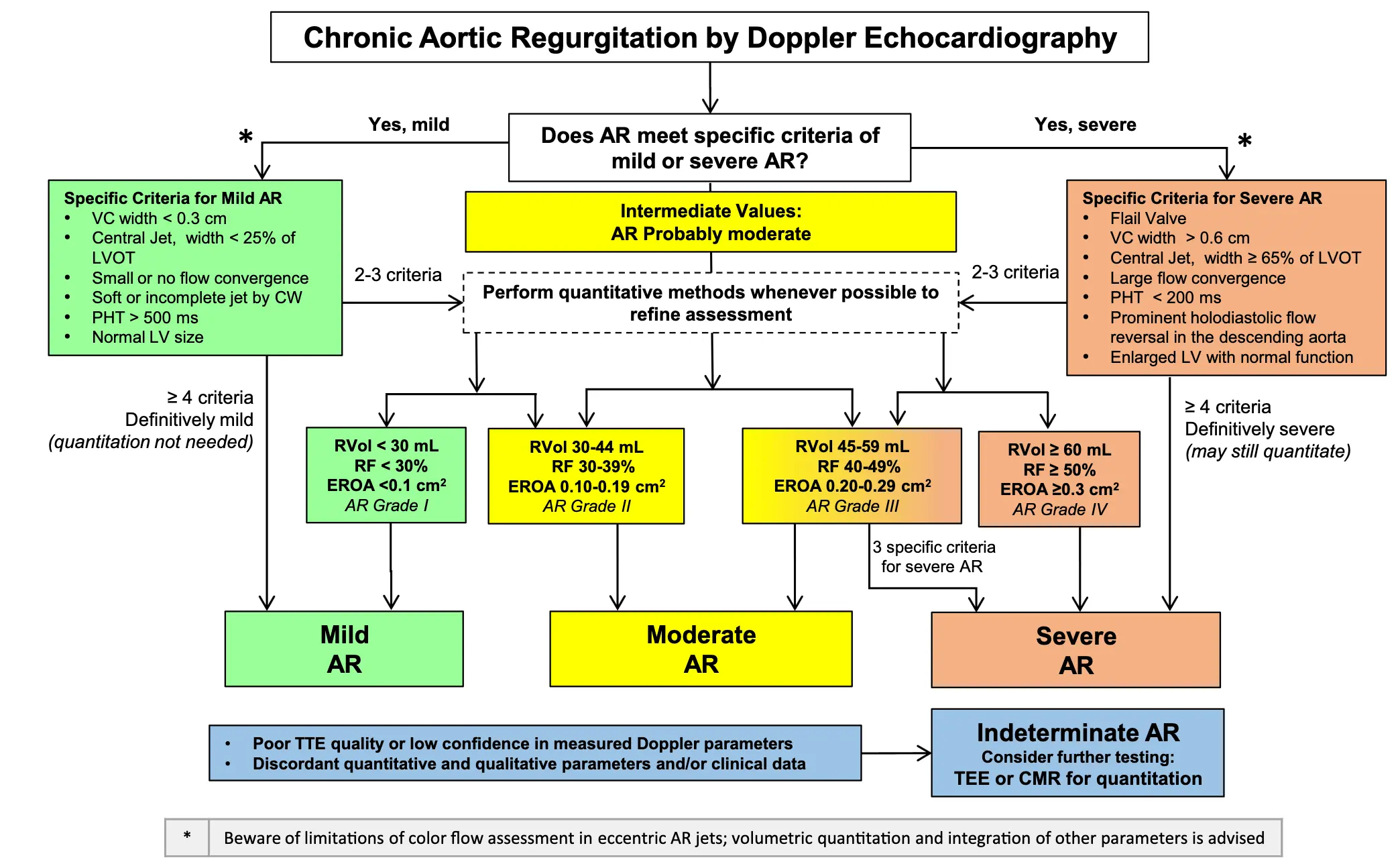
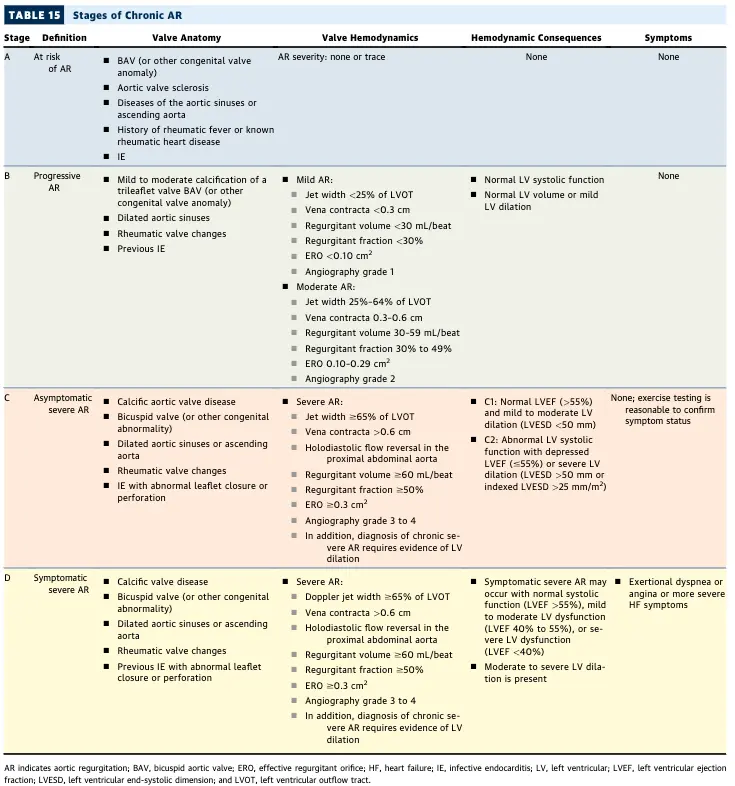
Management
Surveillance with repeat non-invasive testing, e.g. repeat TTE
| Stage | Frequency of Echo Monitoring |
|---|---|
| Progressive (Stage B) | Mild: every 3-5 years Moderate: every 1-2 years |
| Severe (Stage C) | every 6-12 months Dilating LV: more frequently |
- 📝 Outcomes are optimal when surgery is performed before LVEF decreases below 55% 1
- Who gets surgery? 1
- Severe, symptomatic AR (Stage D)
- Severe, asymptomatic AR (Stage C) if
- LVEF ≤ 55% (Stage C2)
- LVEF > 55%, but LVESD >50 mm (or indexed LVESD > 25 mm/m2)
- Already undergoing cardiac surgery for another reason
- Moderate AR (Stage B) who is already undergoing cardiac or aortic surgery for other indications, aortic valve surgery is reasonable (Class 2a)
- Consider in asymptomatic patients with severe AR and normal LV systolic function at rest (LVEF >55%; Stage C1) and low surgical risk, aortic valve surgery may be considered when there is a progressive decline in LVEF on at least 3 serial studies to the low–normal range (LVEF 55% to 60%) or a progressive increase in LV dilation into the severe range (LV end-diastolic dimension [LVEDD] >65 mm) (Class 2b)
- In asymptomatic patients with chronic AR (Stages B and C), treatment of hypertension (systolic blood pressure >140 mm Hg) is recommended (Class 1) 1
- In patients with severe, symptomatic AR and/or LV systolic dysfunction (Stages C2 and D) but a prohibitive surgical risk, GDMT for reduced LVEF with ACE inhibitors, ARBs, and/or sacubitril/valsartan is recommended (Class 1) 1
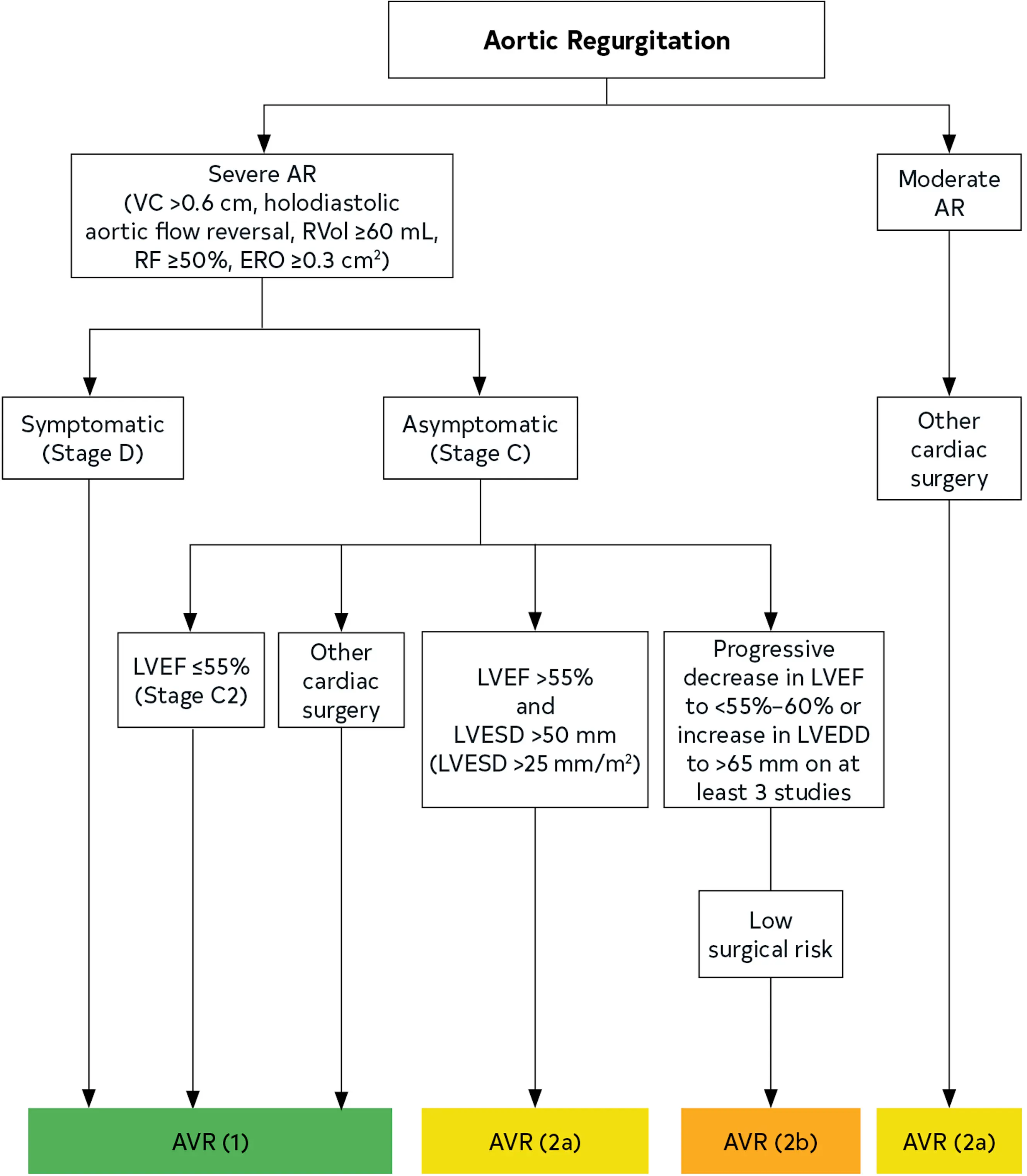
Exam
- Wide pulse pressure
- Effect of lowering the heart rate, e.g. with BBs
- Longer diastolic time allows more volume to flow back into the LV
- I’ve seen permitting a slightly elevated HR to ↓ diastolic regurgitant filling
- In some patients this may result in a paradoxical apparent ↑ in BP
- Longer diastolic time allows more volume to flow back into the LV
Diagnosis
There is no such thing as "physiologic" AI
While ‘‘physiologic’’ or mild degrees of tricuspid and PR are commonly noted in normal exams, AR is not. When AR is detected, the evaluation starts with an assessment of the anatomy of the aortic valve and root to determine the etiology of the regurgitation followed by an assessment of LV size, geometry, and function.
- Echo
- determine whether there is rapid equilibration of the aortic and LV diastolic pressures; visualizing the aortic root; and evaluating LV size and systolic function
- A pressure half-time of <300 ms on the AR velocity curve indicates rapid equilibration of the aortic and LV diastolic pressures.1
- Quantitative measures of regurgitant volume and EROA are better predictors of clinical outcome1
- Prognostic echocardiographic parameters are from parasternal images of TTEs; therefore, a TEE is not necessary for further diagnosis.
- Measures of LV systolic function (LVEF or fractional shortening) and LV end-systolic dimension (LVESD) or LV end-systolic volume are predictive of the development of HF symptoms or death in initially asymptomatic patients (Stages B and C1) and are significant determinants of survival and functional results after surgery in asymptomatic and symptomatic patients (Stages C2 and D)1
- Symptomatic patients (Stage D) with normal LVEF have a significantly better long-term postoperative survival rate than those with depressed systolic function.1
- 📝 In patients with moderate or severe AR and suboptimal TTE images or a discrepancy between clinical and TTE findings, TEE, CMR, or cardiac catheterization is indicated for the assessment of LV systolic function, systolic and diastolic volumes, aortic size, and AR severity (Class 1) 1
- CT imaging is the primary approach for diagnosis of acute aortic dissection because it is highly accurate and continuously available at most medical centers.1
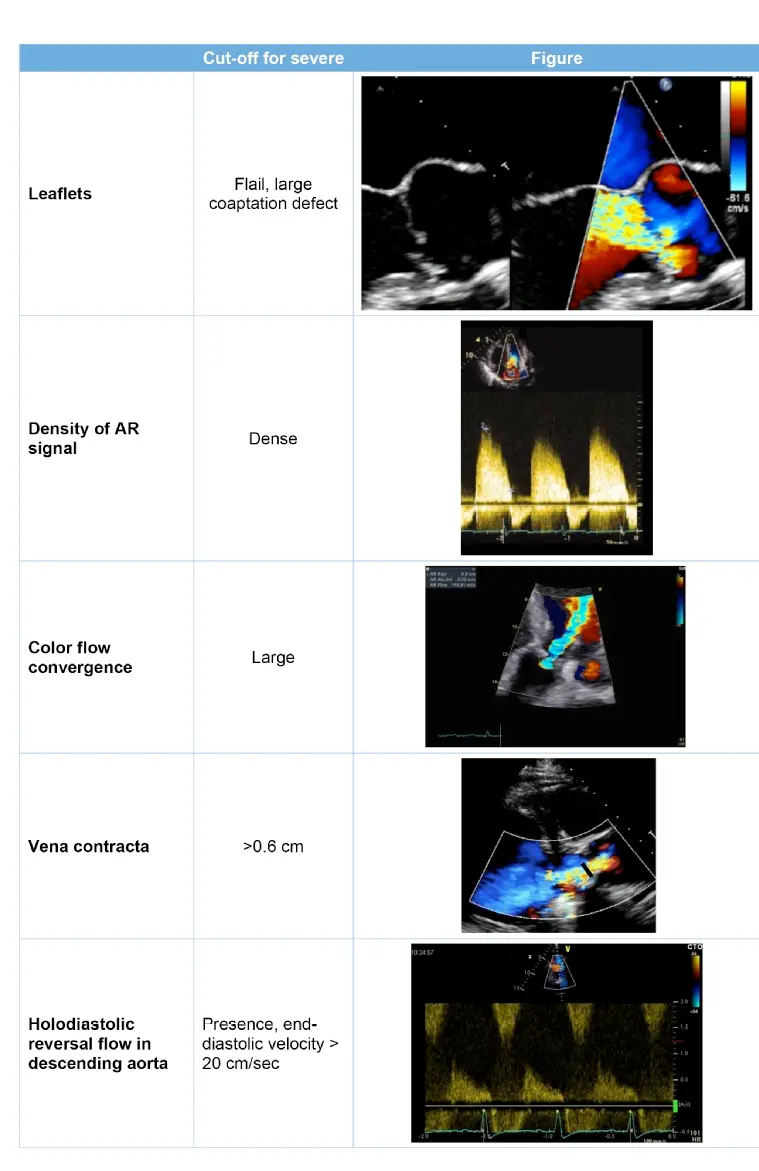 Figure source
Figure source
Pressure Half Time (PHT)
Don't use PHT alone for diagnosis of AR severity
Important limitations of PHT in aortic regurgitation, so don’t base determination on PHT alone.
Recall,
and valve area is inversely proportional to PHT, i.e. larger PHT is associated with smaller valve area.
- PHT < 200 msec → Severe
- PHT 200-500 msec → Moderate
- PHT > 500 msec → Mild
Examples:
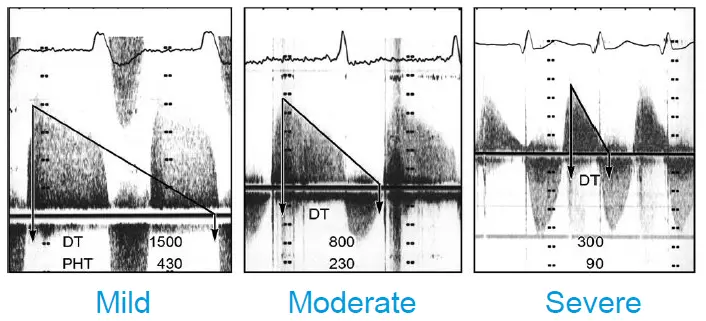
Footnotes
-
Otto, C. M., Nishimura, R. A., Bonow, R. O., Carabello, B. A., Erwin, J. P., Gentile, F., Jneid, H., Krieger, E. V., Mack, M., McLeod, C., O’Gara, P. T., Rigolin, V. H., Sundt, T. M., Thompson, A., & Toly, C. (2021). 2020 ACC/AHA Guideline for the Management of Patients With Valvular Heart Disease. Journal of the American College of Cardiology, 77(4), e25–e197. https://doi.org/10.1016/j.jacc.2020.11.018 ↩ ↩2 ↩3 ↩4 ↩5 ↩6 ↩7 ↩8 ↩9 ↩10